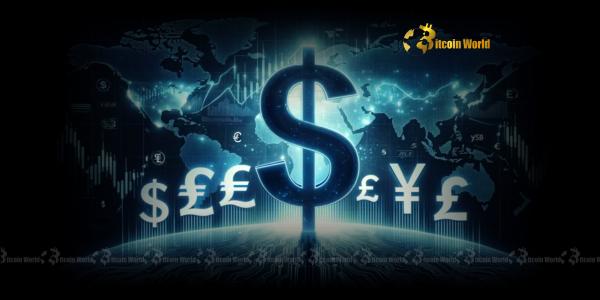The Impact of Fed Minutes and Euro’s Decline on the US Dollar
In the fast-paced world of finance, where every moment can signify a significant shift, traditional currency markets continue to wield immense influence. While the cryptocurrency realm often dominates headlines with its volatility, understanding the dynamics of the US Dollar and major fiat currencies remains essential for traders and investors alike.
Factors Contributing to the Euro’s Decline
Recent financial indicators from key Eurozone economies have signaled a downturn, impacting investor confidence and reducing the appeal of Euro-denominated assets. Ongoing energy crises and geopolitical instability in Europe have added to economic uncertainties, leading to capital outflows. The divergence in economic outlooks and monetary policy expectations between the United States and the Eurozone has resulted in a significant interest rate differential, further contributing to the Euro’s weakening against the stronger US Dollar.
Global Trade Tensions and Currency Impact
The impact of global trade tensions on currency markets is profound. Trade disputes, tariffs, and protectionist policies between major economies create a ripple effect that reverberates throughout the financial world, particularly affecting currency valuations. Trade conflicts disrupt supply chains, increase production costs, and reduce demand for goods and services, ultimately dampening global economic growth.
Driving Forces Behind the Strength of the US Dollar
Several factors have bolstered the US Dollar’s recent strength. Expectations of the Federal Reserve maintaining higher interest rates or considering further hikes have made dollar-denominated assets more attractive to global investors. Strong economic data from the United States, such as robust employment numbers and resilient consumer spending, have signaled a healthy economy, enhancing the appeal of the US Dollar amidst global uncertainties.
Decoding the Fed Minutes for Future Insights
The release of the Federal Reserve meeting minutes is a highly anticipated event for currency traders and economists. These minutes provide valuable insights into the Fed’s stance on monetary policy, offering clues about future interest rate decisions and economic outlooks.
Conclusion
The interplay of factors such as economic indicators, geopolitical risks, and trade tensions significantly influences currency markets, shaping the value and performance of major fiat currencies like the US Dollar and Euro. Understanding these dynamics is crucial for investors navigating the complex landscape of traditional currency trading.


